實驗室簡介
Lab Introduction
神經工程實驗室研究核心著重於穿戴式「腦機介面」的發展與應用,研究主軸為研發智慧型腦機介面系統,跨電機資訊與生物醫學等領域結合計算型智慧技術,包括穿戴式腦波設備及電極的開發、人工智慧及深度學習演算法開發優化、智慧醫療臨床研究應用,並榮獲未來科技獎、國家新創獎等諸多獎項。同時實驗室與加州大學聖地牙哥分校、雪梨科技大學等有密切國際合作。
The Neural Engineering Laboratory focuses on the development and application of wearable "brain-computer interfaces (BCI)". The research centers on the development of intelligent BCI, integrating computational intelligence technologies across fields such as electrical engineering, information technology, and biomedical sciences. This includes the development of wearable electroencephalogram (EEG) devices and electrodes, the optimization of artificial intelligence (AI) and deep learning algorithms, and the clinical application of smart healthcare. The laboratory has received many awards including the Future Tech Award and the National Innovation Award, and has close international collaborations with the University of California, San Diego and the University of Technology, Sydney.
研究方向
Research Topics

系統開發
System Development
»腦波乾式電極與腦機介面系統
»Dry EEG Electrodes and BCI Devices
♦本團隊與台灣科技大學合作,開發用於現實生活腦機介面應用的新型彈性石墨烯乾式電極,2021年發表於JNE國際期刊(IF:5.043),並獲得中華民國專利 I720837。
♦本團隊開發了無需導電凝膠的高濕海綿電極,通過實驗對海綿電極和經典濕電極信號進行相關分析,時間分辨率上的平均相關性達到82.56%,在頻率響應上平均相關性達到 97.18%。該成果發表於Sensors(IF:3.847)國際期刊。
♦本團隊結合VR與穩態視覺誘發電位BCI技術應用於軍事射擊任務,獲得2017年光寶創新獎技術組銅賞,2017年未來科技突破獎。此技術未來可廣泛應用於虛擬實境遊戲控制、智慧醫療輔具開發與智能家庭應用等。
♦本團隊於2022年開發新型穿戴式腦波裝置。
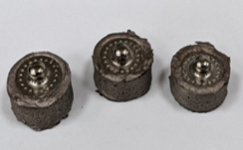
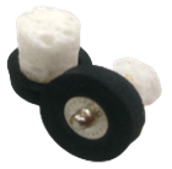
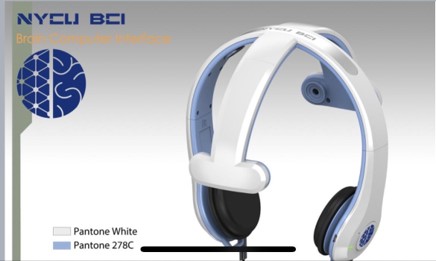
»人工智慧深度學習增進腦機介面系統效能
»AI Algorithms for Improving the BCI Performance
♦2021年與UCSD研究團隊跨國際合作,提出了一種新的混合 SSVEP-RSVP BCI,以提高多目標場景中目標/非目標對象的分類性能,實現了 81.59% 的離線準確率, 發表於JNE國際期刊(IF:5.043)。同年開發了一種多參數生理狀態指標監測系統(專注力、疲勞、壓力等),該系統可實時監測受試者的生理狀態變化,發表於 Frontiers in human neuroscience (IF:3.473)國際期刊。
♦本團隊與西班牙和澳洲團隊跨國際合作,首創多層模糊決策架構於提升左右手運動想像之腦機介面系統,系統準確率高於傳統腦機介面系統,並發表於IEEE CIM 頂尖國際期刊(IF:9.809)。
♦為解決實際環境下腦波雜訊影響BCI系統準確率問題,本團隊開發一種在線自適應偽影子空間重建 (AASR) 技術,該技術可顯著去除偽影成分並保留原始 EEG 信號,此成果已於2022年發表於IEEE TNNLS頂尖國際期刊(IF:14.225)。
♦
與台北榮總神經醫學中心研究團隊合作, 獲科技部110-111兩年期腦科技計畫「以多模態腦幹神經標記解訊偏頭痛疼痛敏感度」,包含客觀量化解訊人體體感覺敏感度之研究以構建多模態融合系統, 同時與UCSD研究團隊合作開發適應性雜訊子空間重建法(AASR)去除腦波雜訊技術,發表於IEEE TNNLS(IF:14.225) 。
♦In 2021, in cooperation with UCSD, a new hybrid SSVEP-RSVP BCI is proposed to improve the classification performance of target/non-target objects in multi-object scenarios. Results were published in the JNE(IF:5.043). Our team also developed a Multi-Parameter Physiological State Monitoring system, which can monitor the subjects' physiological state changes in real-time. Results were published in Frontiers in human neuroscience (IF:3.473).
♦International collaboration with Spanish and Australian research teams to develop the first multi-layer fuzzy decision-making framework to improve the accuracy of upper limb motor imagery BCI system, published in IEEE CIM (IF:9.809).
♦In cooperation with UCSD, to develop adaptive noise subspace reconstruction (AASR) for removing brain signal noise, published in IEEE TNNLS (IF:14.225).
♦In cooperation with the Department of Neurology Neurological Institute of TVGH, implementing the two-year MOST project : "Decoding Pain Sensitivity in Migraine with Multimodal Brainstem-based Neurosignature", and in cooperation with UCSD, to develop adaptive noise subspace reconstruction (AASR) for removing brain signal noise, which was submitted to IEEE TNNLS (IF:14.225).
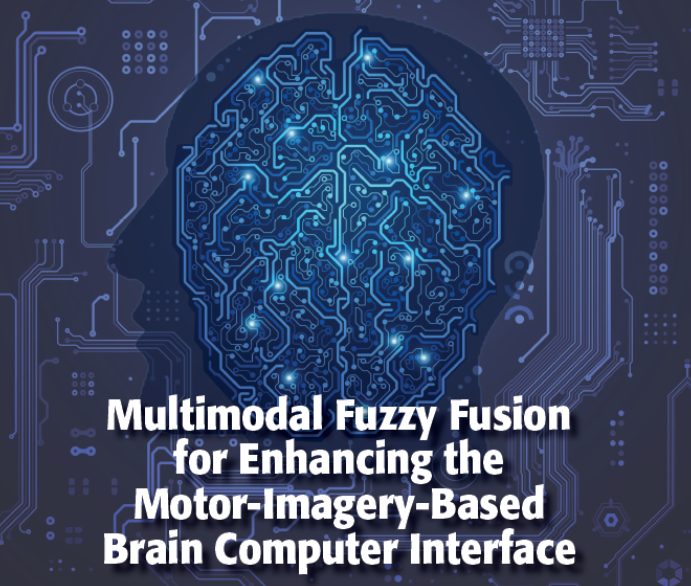
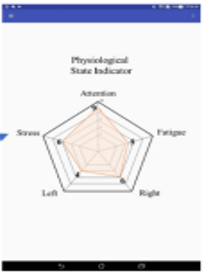
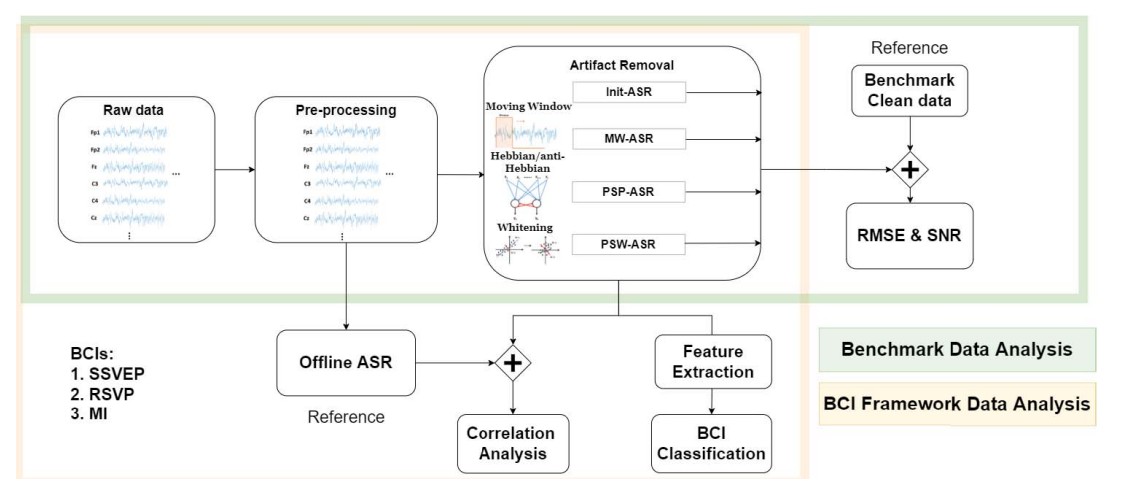
神經造影
Neuroimaging
»真實環境下人類神經造影研究
»Steady-State Visually Evoked Potential (SSVEP) BCI
探討真實教室環境下上課專注力之大腦狀態 (與美國陸軍實驗室 及 加州大學聖地牙哥分校合作)
(L.-W. Ko et al., Front. Hum. Neurosci. 2017. Citation: 31//Komarov, O et al. IEEE TNSRE .2019)
Sustained attention in real classroom settings: An EEG Study (cooperation with U.S. ARL and UCSD)
(L.-W. Ko et al., Front. Hum. Neurosci. 2017. Citation: 31//Komarov, O et al. IEEE TNSRE .2019)
♦真實教室環境下探討學生於課堂上專注力之大腦認知狀態
♦作為未來真實環境下腦機介面系統的腦波擷取特徵
♦Investigated students' attention in real classroom setting and corresponding EEG activity
♦Potential daily and clinical application.
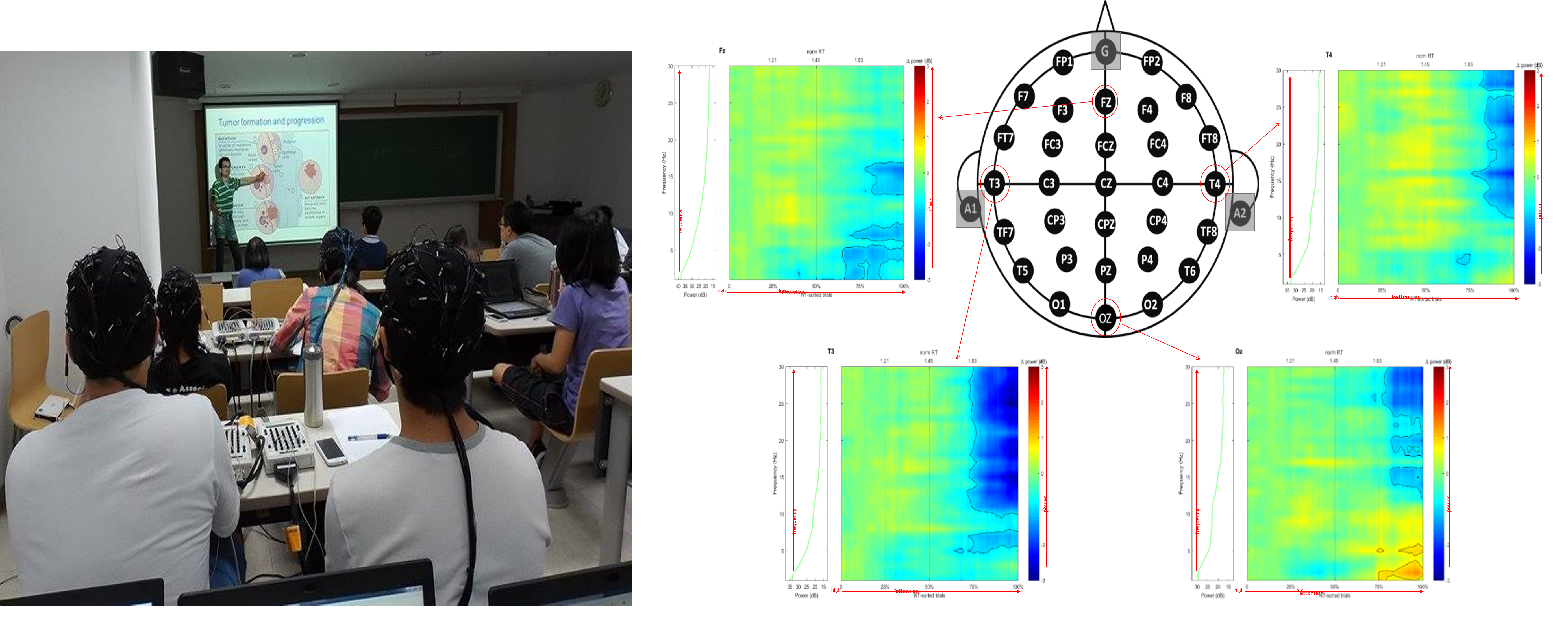
臨床應用
Clinical applications
»新世代下肢復建系統(與高雄醫學大學復健科合作)
(Wei-Chiao Chang et al., JSID 2019. Distinguished paper award)
»Next-Generation Lower Limb Rehabilitation System(cooperation with Kaohsiung Medical University)
(Wei-Chiao Chang et al., JSID 2019. Distinguished paper award)
♦與高醫大附院復健科研究團隊合作,結合創新擴增實境復健與腦波分析,證實擴增實境復健在臨床上的潛力,發表於IEEE TNSRE (2021年,IF:4.528)、獲JSID2019傑出論文獎、第十六屆(2019)國家新創獎(臨床新創組),及中華民國專利3件。
♦於2020年以智慧型腦機介面控制下肢復健機器人連續獲得第十七屆(2020)國家新創獎(臨床新創組)與第十八屆(2021)國家新創獎(續獎)。
♦突破以大腦皮質功能性神經網絡連結辨識左右腦運動想像,用於上肢及下肢腦機介面系統開發及神經復健應用,發表於IEEE Access (2020年,IF:3.476)、獲iFUZZY 2020 學生最佳論文二獎。
♦獲第十六届國家新創獎
♦In cooperation with the Rehabilitation Department of the KMUH, developed AR-BCI, and confirmed its clinical potential in rehabilitation, published in IEEE TNSRE (2021, IF: 4.528), won the JSID2019 Outstanding Paper Award, the 16th (2019) National Innovation Award, and 3 patents of the R.O.C.
♦Developed an intelligent BCI controlling lower limb rehabilitation robot and won the 17th (2020) and 18th (2021) National Innovation Award.
♦Core technology in bipedal functional connectivity for the lower extremity BCI in neurorehabilitation applications, published in IEEE Access (2020, IF: 3.476), won the second prize in best student award in iFUZZY 2020.
♦Distinguished paper award of 2019 Display Week
♦National Innovative Award 2019

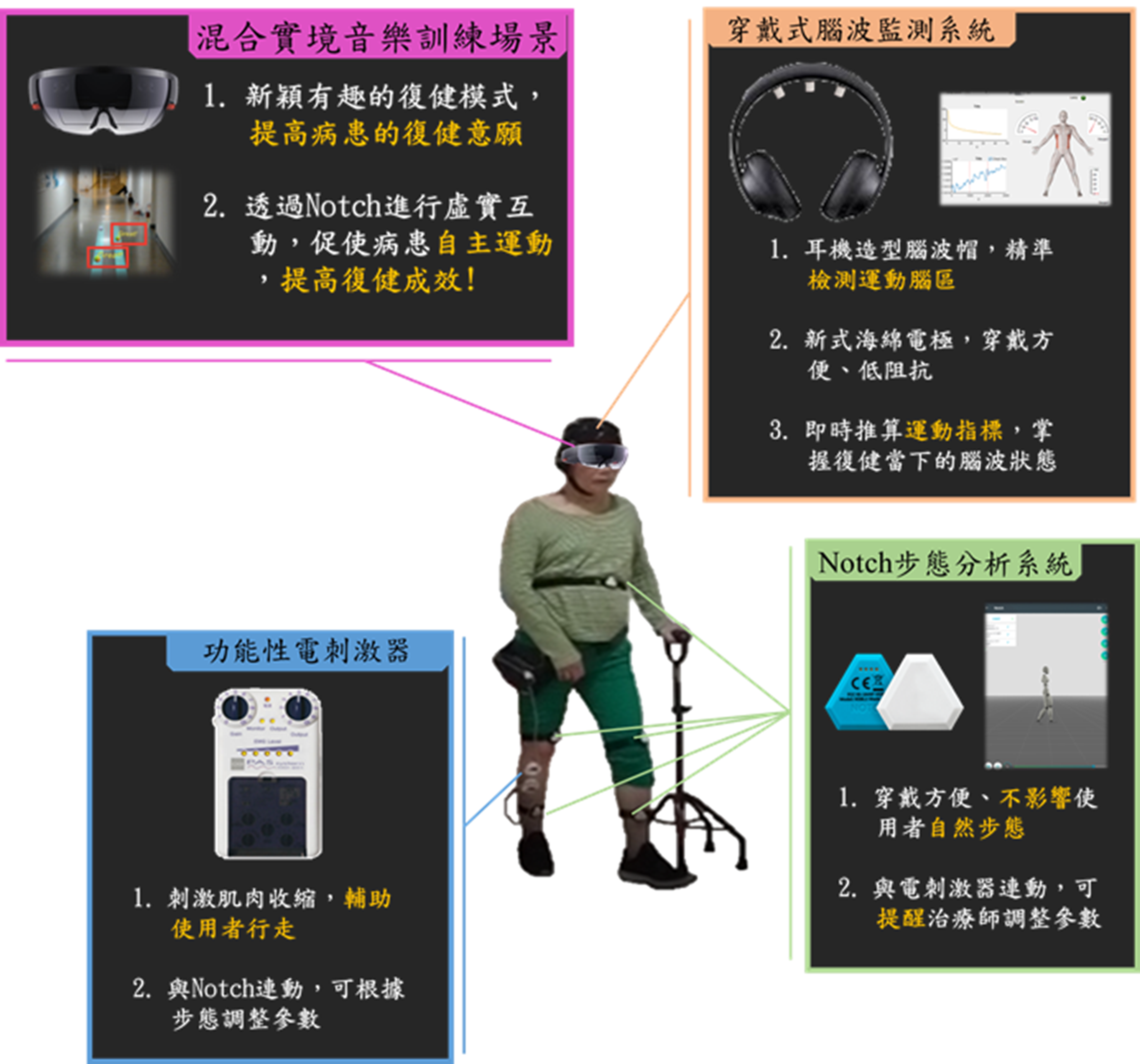
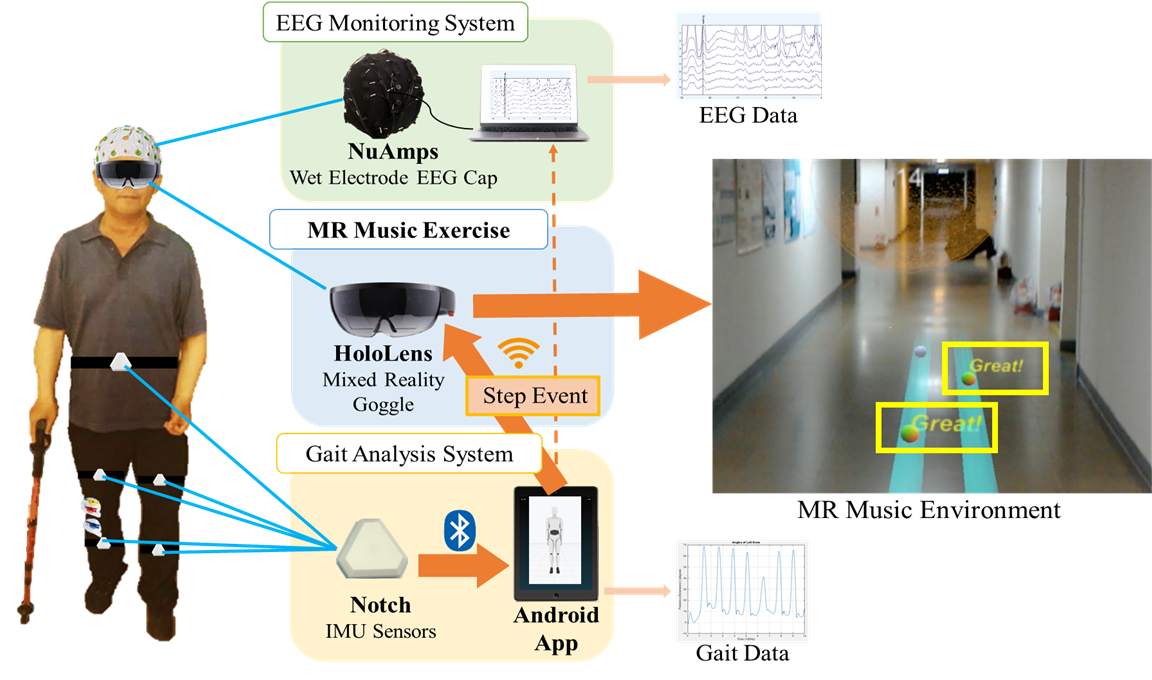

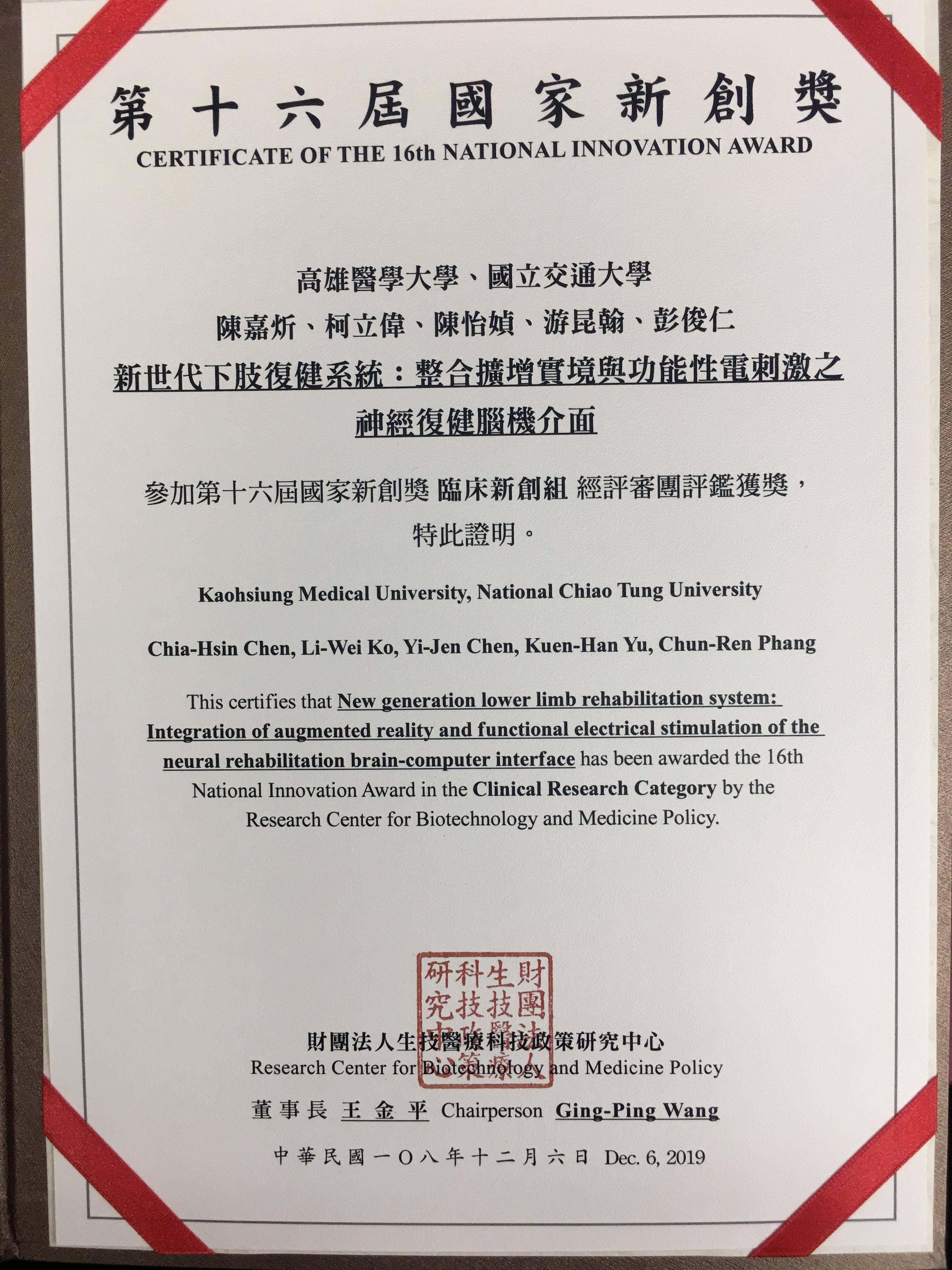
»解訊偏頭痛神經機制及神經刺激反饋
»Decoding the Neural Mechanism of Migraine
»AI Algorithms for Improving the BCI Performance
♦
另本團隊正執行科技部三年期研究計畫「開發耳內式腦波感測與迷走神經刺激裝置於偏頭痛預測與治療」,利用偏頭痛腦波特徵,開發AI頭痛發作前的預測模型,結合tDCS神經電刺激技術,開發「智慧型偏頭痛預警及電刺激輔助治療系統」,並榮獲2021未來科技獎。
♦
使用 SSVEP 的多尺度相對固有模糊熵的新應用來研究偏頭痛發作間期和發作前期之間的腦電圖複雜性變化,對兩階段的分類準確率為 81 ± 6%,參與合作發表於IEEE TFS 頂尖國際期刊 ( IF:12.253)。
♦
Our team is implementing the three-year MOST project, using the migraine EEG features, to develop "Intelligent System of Migraine Detection and Neural Stimulation for Assisting Treatment", and won the 2021 Future Tech Award.
♦
We present a novel application of multiscale relative inherent fuzzy entropy using SSVEPs to investigate EEG complexity change between two migraine phases (interictal and preictal), co-published in IEEE TFS (IF:12.253).
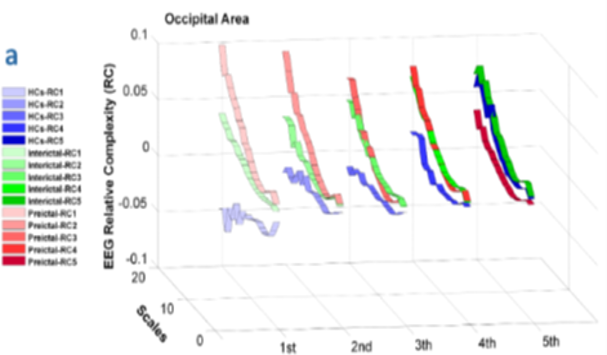
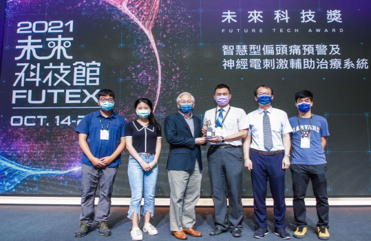
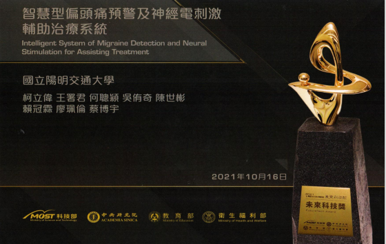
生命徵象(心跳、體溫、呼吸)監測系統
Vital Signs Monitoring System
現今每位護士照顧人數高達13位病患,醫院固定每4小時循房一次,並量測病患之心跳、呼吸及體溫,相當耗時卻不能讓病患得到 更好的醫療照護。我們開發出一套系統,只需得到心電圖及「體表」體溫,即可推算出心跳數、呼吸數及「核心」體溫,並即時將 數據以無線傳輸傳送至護理端,藉此不僅能減少護理人員的工作量,每位病患也能得到更好的醫療品質。實驗成果於2022/7/15由國際期刊Biosensors接受
Every nurse has to take care of 13 patient on average, and makes their rounds every 4 hours. Heart rate, respiration and body temperature are measured, which takes a lot of time. We've developed a system with only ECG signals and shell temperature required, we can calculate the patients' heart rate, respiration and core temperature. Combining the algorithm with wireless system, we can reduce the nurse's workload and enhance the healthcare quality. This study has accepted by Biosensors on Jul. 15, 2022.
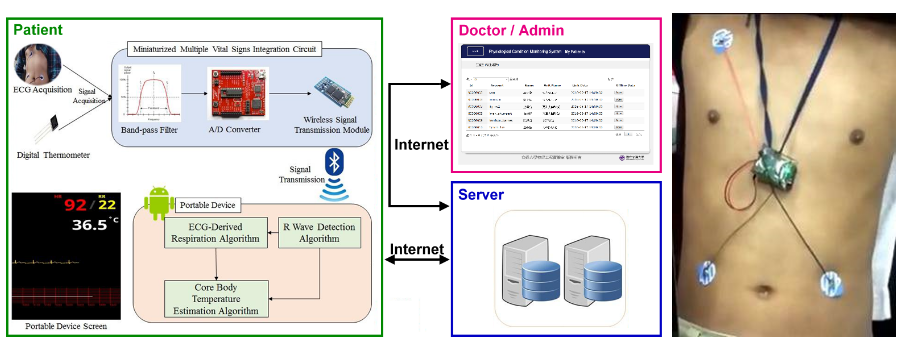
»注意力不足過動症輔助診斷與神經回饋
»Assistive Diagnosis and Neurofeedback of ADHD
♦結合無線穿戴式BCI及持續性專注力測驗,新創智慧型注意力不足過動症(ADHD)早期預警平台,準確率達95%,可輔助臨床醫師診斷學齡前兒童ADHD異質性,研究成果獲第十七屆(2020)國家新創獎(學研新創組),發表至IEEE TNSRE (IF=3.802)與JAD (IF=3.256),於高雄長庚進行場域驗證,獲第十八屆(2021)國家新創獎續獎
♦運用長短期記憶網路 (LSTM) 提取時間序列變化特徵之優點,區分ADHD與正常人由靜息狀態轉換至執行認知任務之腦波變化,準確率達90.5%,研究成果發表於Journal of Neural Engineering (IF=5.38),腦區連結於靜息狀態與任務狀態之探討發表於PCN (IF=12.145),異質性分析發表於JPM(IF=3.508)
♦將相關研究延伸至全台各大醫院,拓展建置全台ADHD腦波資料庫
♦Using a wireless EEG device and CPT, developed an early warning platform for ADHD, with an accuracy rate of 95%. It can assist clinicians in diagnosing ADHD in preschoolers. Our team won the 17th (2020) National Innovation Award (Study-Research Innovation Group), published to IEEE TNSRE (IF= 3.802) and JAD (IF=3.256). We conducted field verification in KCGMH, and won the 18th (2021) National Innovation Award Renewal Award.
♦Using LSTM to extract time series features, we distinguished the EEG changes between ADHD and TD from resting state to cognitive task with an accuracy of 90.5%, published in Journal of Neural Engineering (IF=5.38). FC analysis in task-related dynamic alterations published in PCN (IF=12.145), and heterogeneity analysis published in JPM (IF=3.508).
♦Extend the research to all major hospitals in Taiwan and expand the ADHD EEG database in Taiwan.
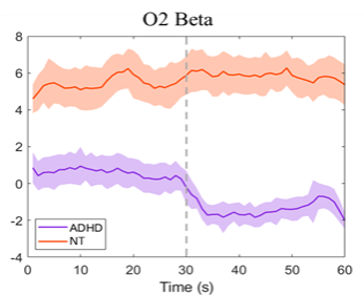
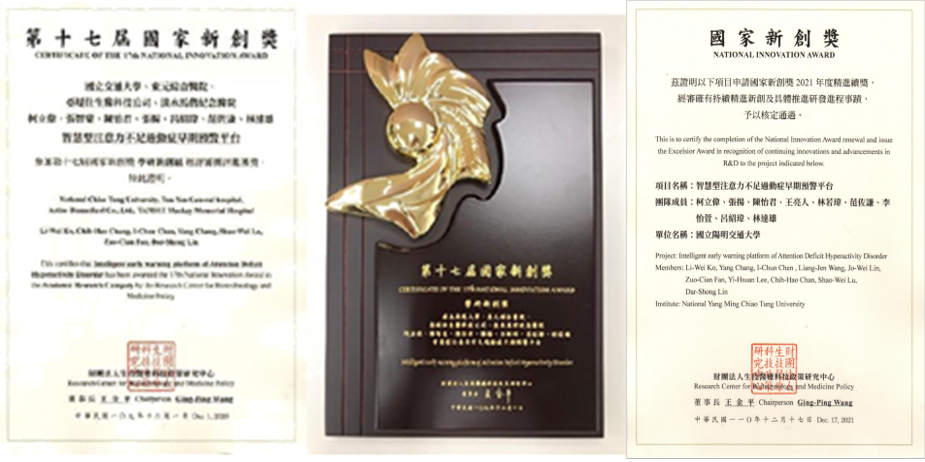
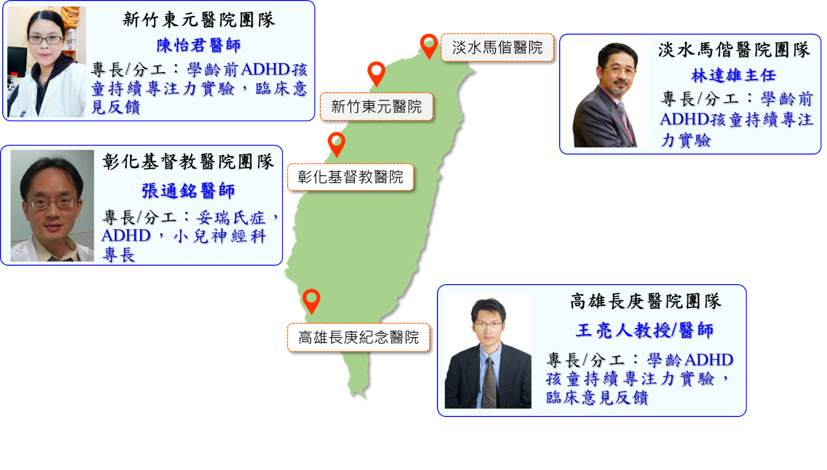
日常應用
Daily applications
»睡眠健康促進系統
»Sleep Improvement System
♦本團隊合作對象:高雄醫學大學附設醫院、台北榮總、振興醫院
♦開發自動化的單通道睡眠階段分析演算法(準確率達80%) ,可在不同的PSG系統間通用,不受機器歸格限制,相關結果以發表於國際期刊 Frontiers in Neuroscience (2014年,IF=5.152)以及 Processes (2021年,IF=3.352)
♦發現在薰衣草精油可以促進夜間深度睡眠與慢波(Slow-wave)發生,藉此大幅提升睡眠品質,證實精油對睡眠品質的改善有其科學根據。相關研究成果已發表於國際期刊Scientific Reports (2021年,IF=4.996)。
♦與高雄醫學大學共同開發模擬日光喚醒系統。
♦We collaborate with KMUH, TVGH, and Cheng Hsin General Hospital
♦We developed a single-channel sleep stage classifying algorithm (acc: 80%). It can be used across data from different PSG systems, Related results were published in Frontiers in Neuroscience (2014, IF=5.152) and Processes (2021, IF=3.352)
♦We found lavender essential oil can induce deep sleep and occurrences of slow-wave activity. The provides scientific foundation for use of essential oil in sleep improvement. Related results were published in Scientific Reports (2021, IF=4.996)
♦We are developing simulated sunrise waking system with KMUH.
